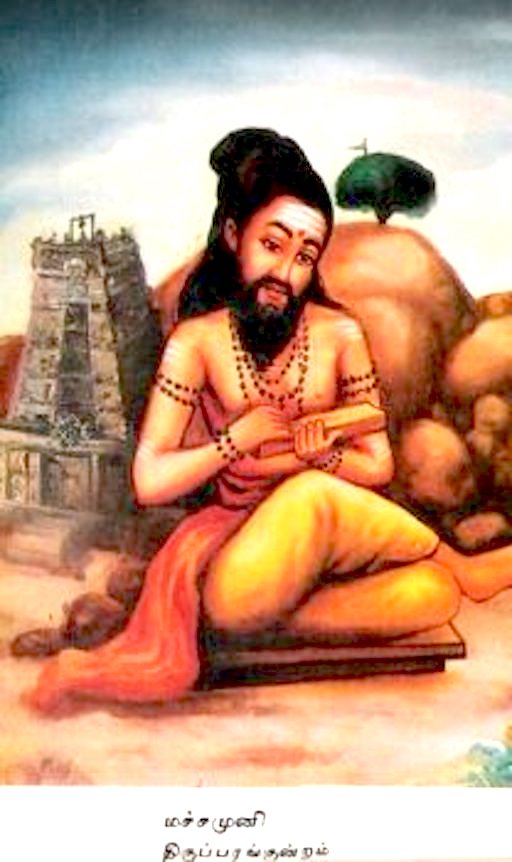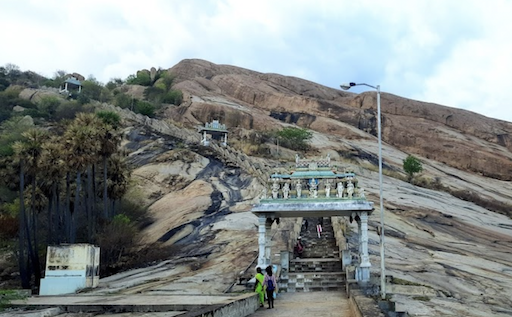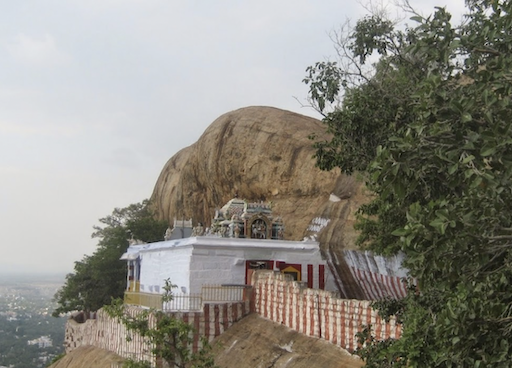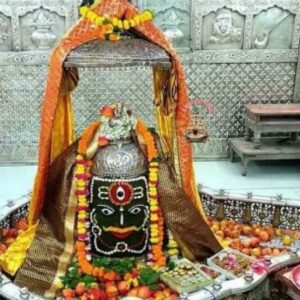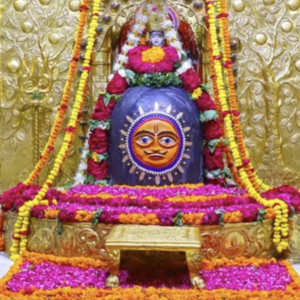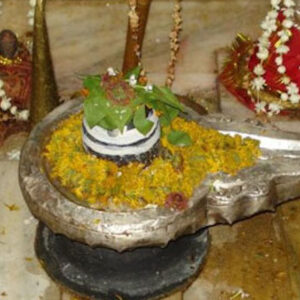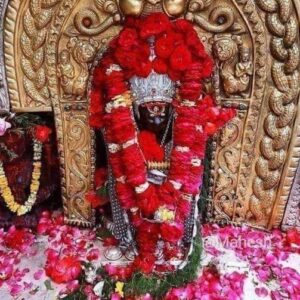This is a Jeevasamadhi of Machhindranath Siddha also known as Machmuni Siddhar in south, one of revered 18 Siddhars from Tamil Nadu. The Jeevasamadhi is on top of the pond.
There is a place to sit and meditate next to the Jeevasamadhi. You can go into meditative states here effortlessly.
How to get there
You have to climb Thiruparankundram hill which can take up to 30 minutes to reach the Jeevasamadhi. It is located on the left side of the staircase while climbing the hill. The jeevasamadhi is located behind the Kashi Vishwanath Temple. The hill is 10 kms south of Madurai Airport.
Map: https://goo.gl/maps/okzKnUd7qAMqnSVb9
About Machhindranath Machmuni Siddhar
Hatha Yoga Pradipika begins with: “Yoga was first known to Gorakhnath and Matsyendranath, and Swatmarama Yogi knew it by the grace of these two.”
Matsyendra Nath is recognized as one of the most remarkable yogis of the Natha Sampradaya and Maha Siddha Tradition. He enjoys wide recognition as the Guru of Gorakshanath and is less known as one of the founders of the tantric Kaula Sadhana. Matsyendra Nath is an essential person for the Nath Yogis because he is the Guru and the founder of their tradition. Although they support the view that Guru Gorakshanath founded the Nath Order, Matsyendranath and Jalandharnath precede him in the list of Acharyas parampara – the lineage of the direct passing on of the Tradition. For this reason, Matsyendranath is also known as Dada (Guru) Matsyendranath, where dada means ‘Grandfather Guru.’ While all Nath Yogis unanimously accept Guru Gorakshanath as their Guru, Matsyendranath, in his turn, is recognized as the preceptor of their guru, and therefore as their GrandFather Guru.
Historical perspective
Researchers have been unable to come to a unanimous agreement about the exact date when Matsyendranath lived. According to various opinions, he lived not before the 7th century and no later than the 12th century. The earliest date is based on the fact that he lived simultaneously with Narendra Deva, king of Nepal, who ascended to the throne in about 640 A.D. and ruled till his death in 683 A.D. The latest date is based on the biography of Saint Jnaneshvar, by which he lived not long before him.
The Great Yogi
There are many legends in India and Nepal describing the supernatural abilities and miracles performed by Matsyendranath. It is widely believed that, like Guru Gorakshanath, he also reached a state of immortality and is endowed with extraordinary magical powers, much more than the term ‘ordinary human being’ can express. He is mentioned by the author of HYP Swatmarama as one of the Great Siddhas, who destroyed the hold of time (maya) by the power of Hatha yoga, and became able to wander in the Universe at his wish.
Sometimes Matsyendranath is compared with Shiva in the Indian Natha Tradition, and in the Buddhist tradition of Nepal, he is worshiped as Avalokiteshvara– the divinity of the Buddhist Pantheon. One of the most remarkable of the miraculous powers mentioned in the legends about him was his ability to live in his own body and enter other bodies by free will and remain there for prolonged periods, or permanently. If we accept this as true, he is immortal and keeps on passing from one body to another. It is believed that in his knowledge of the occult sciences and magic, he was second to none, maybe excluding only his Great Disciple. He also has a reputation as a famous tantric practitioner; for example, in one legend of Nepal, he appeared as the great sorcerer who, by the power of his magic, exterminated the army of the King of Nepal, which later was restored by Gorakh Nath. He is honored as their Guru and as an ideal of sadhaka by many modern practitioners of tantra, especially by those who try to follow the Path of Kaula Shakti Marga.
Matsyendranath is the name he is referred to in the northern part of India, while Machamuni is the name he is known by in the southern part. The word ‘matsya’ means fish, so it translates to “Lord of the Fishes’’. He is also known by various other piscine names, including Mina, Macchandar, and Macchaghna. He is associated with both the eastern and western transmissions of Kaula Tantra and their later southern variant known as Sambhava. A variety of texts related to these traditions are attributed to him.
Read More
https://mydattatreya.com/matsyendranath/
